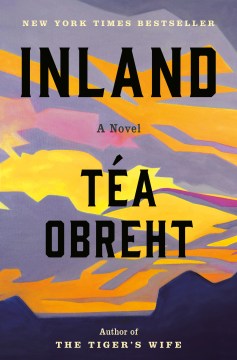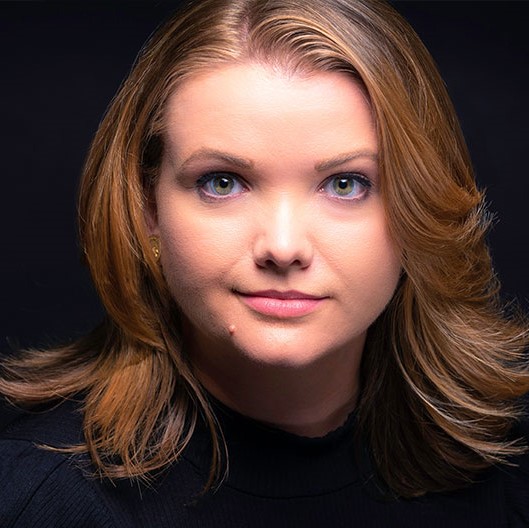Interview by Jana Hoops. Special to the Clarion-Ledger Sunday print edition (September 8)
 Téa Obreht’s sophomore novel Inland paints a stark picture of the brutal 19th century American West in a frontier tale that culminates with the meeting of two unlikely characters who give their all to the parched desert, the unforgiving land, and the never-ending drought of the Arizona Territory. A strong touch of mysticism and more than a few conversations with the dead add suspense and intense interest to the story.
Téa Obreht’s sophomore novel Inland paints a stark picture of the brutal 19th century American West in a frontier tale that culminates with the meeting of two unlikely characters who give their all to the parched desert, the unforgiving land, and the never-ending drought of the Arizona Territory. A strong touch of mysticism and more than a few conversations with the dead add suspense and intense interest to the story.
Obreht’s internationally bestselling debut novel The Tiger’s Wife earned her the 2011 Orange Prize for Fiction, and her works have appeared in The Best American Short Stories, The New Yorker, The Atlantic, Harper’s Magazine, and others.
A native of Slovenia (formerly Yugoslavia), Obreht now lives in New York with her husband, where she teaches at Hunter College.
Tell me about the “frontier story” your research uncovered that became the basis of the narrative of Inland.

Téa Obreht
Stuff You Missed in History Class, a podcast I absolutely adore, dedicated an episode to something called the Red Ghost. It centered a yarn about two Arizona women who have a disastrous encounter with a monster on their ranch, and went on to frame the incident in the context of the weird, side-lined true history of the Camel Corps, the military experiment which brought camels from the Ottoman empire to the American southwest in 1856.
I’d never heard of either the yarn or the history before, despite having researched regional history and folklore for quite some time, and was absolutely blown away by it–not only because even the weirdest part of this very weird story was apparently true, or because the idea of a camel among saguaros (cactus) presented such a compelling narrative challenge, but also because at the heart of the story were these real people, Hadji Ali and Greek George, who had traveled here from an empire which, at that time, also held the Balkans.
The brutal setting of Inland obviously shaped its characters. How does this setting really become a sort of “character” of its own story?
I think the setting’s most prominent “personality” trait, if you will, is its complete lack of investment in what stories do and don’t survive it. The prevailing and most dangerous myth of the West tells us that an individual’s triumph or a story’s survival are directly proportional to goodness and worth; that good people “make it” because they deserve to.
Nora and Lurie spend their respective storylines learning the falsehood of this mythology by watching–and frankly helping perpetrate–the breakdown of communities and individuals all around them. They are fearful of a similar fate and are working against the inevitable reality that they don’t matter to this landscape and that it is determined to forget them.
Main characters Nora, a homesteading wife and mother awaiting her husband’s return from a desperate trek to find water for the family; and Lurie, a fugitive running from the law, share the common trait of talking with the dead-and, for both, the “conversations” are with family members. You also used mysticism in your first novel, The Tiger’s Wife. Tell me about your interest in this phenomenon–and how it colors Inland.
I’m deeply fascinated by the trappings of belief–the way we reel between resisting mysticism and needing it. What I found additionally alluring about this period of American history was the clash of technology and spiritualism taking place from coast to coast, and how that would have shaped these characters’ perception of, and relationship to, the supernatural plane.
There’s Nora, who “talks” to her dead daughter, but insists she knows these conversations to be illusory, that the ghost is obviously just a figment of her imagination. And then there’s Lurie, for whom seeing the dead is a fact of life–albeit one from he derives no comfort because the spirits he encounters are the products of the violent, turbulent history in which he himself participates. His ghosts are people who suffered violence in death or burial, and he fears a similar fate might await him, and thus takes no solace in the confirmation of an afterlife.
Caught between them is Josie. She is Nora’s niece, a medium from New York, whom Nora derides terribly for the charlatanism of “pretending” to commune with the dead–through, of course, Nora is guilty of this kind of pretending, too.
Coming from different circumstances but sharing the urgent reality of a deadly drought, why would you say Lurie and Nora were “destined” to meet?
Because, by the time they meet in the book, despite all their recklessness and weaknesses, they are the only people in the entire world who can give each other what they need.
Do you already have plans for your next book–and can you give us some hints of what it will be about?
I still feel drawn to the West, and will no doubt write about it again down the line. But I think the next one might be a desert island book.
Téa Obreht will be at the Eudora Welty House on Thursday, September 12, at 5:00 to sign and read from Inland. Lemuria has selected Inland as one of its two September 2019 selections for its First Editions Club for Fiction.


Comments are closed.